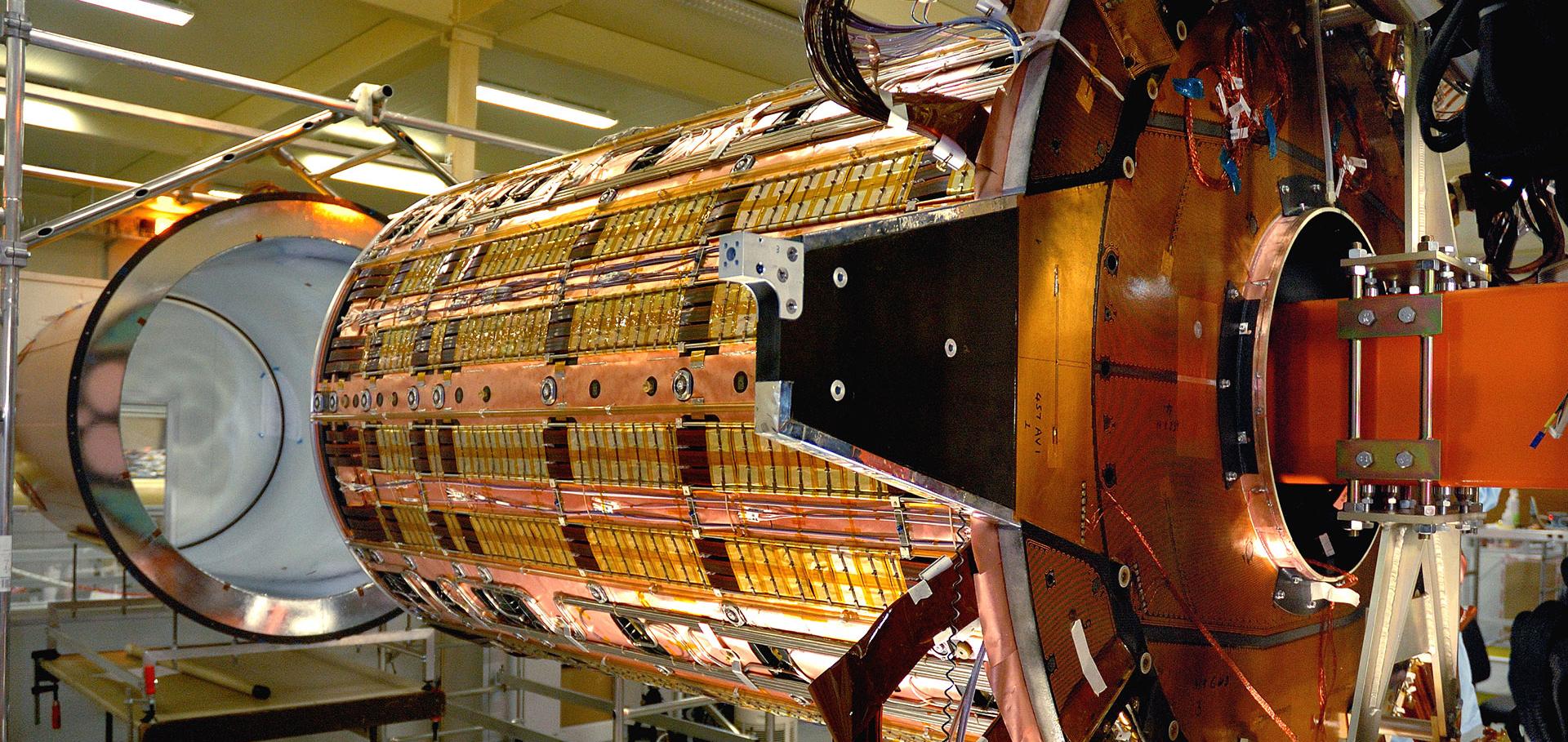Measurement of neutron production in atmospheric neutrino interactions at the Sudbury Neutrino Observatory
Physical Review D American Physical Society 99:11 (2019) 112007
Abstract:
Neutron production in giga electron volt–scale neutrino interactions is a poorly studied process. We have measured the neutron multiplicities in atmospheric neutrino interactions in the Sudbury Neutrino Observatory experiment and compared them to the prediction of a Monte Carlo simulation using genie and a minimally modified version of geant4. We analyzed 837 days of exposure corresponding to Phase I, using pure heavy water, and Phase II, using a mixture of Cl in heavy water. Neutrons produced in atmospheric neutrino interactions were identified with an efficiency of 15.3% and 44.3%, for Phases I and II respectively. The neutron production is measured as a function of the visible energy of the neutrino interaction and, for charged current quasielastic interaction candidates, also as a function of the neutrino energy. This study is also performed by classifying the complete sample into two pairs of event categories: charged current quasielastic and non charged current quasielastic, and νμ and νe. Results show good overall agreement between data and Monte Carlo for both phases, with some small tension with a statistical significance below 2σ for some intermediate energies.Combined analysis of all three phases of solar neutrino data from the Sudbury Neutrino Observatory
Physical Review C American Physical Society (APS) 88:2 (2013) 025501
Four methods for determining the composition of trace radioactive surface contamination of low-radioactivity metal
Nuclear Instruments and Methods in Physics Research, Section A: Accelerators, Spectrometers, Detectors and Associated Equipment 659:1 (2011) 182-192
Abstract:
Four methods for determining the composition of low-level uranium- and thorium-chain surface contamination are presented. One method is the observation of Cherenkov light production in water. In two additional methods a position-sensitive proportional counter surrounding the surface is used to make both a measurement of the energy spectrum of alpha particle emissions and also coincidence measurements to derive the thorium-chain content based on the presence of short-lived isotopes in that decay chain. The fourth method is a radiochemical technique in which the surface is eluted with a weak acid, the eluate is concentrated, added to liquid scintillator and assayed by recording betaalpha coincidences. These methods were used to characterize two 'hotspots' on the outer surface of one of the 3+He proportional counters in the Neutral Current Detection array of the Sudbury Neutrino Observatory experiment. The methods have similar sensitivities, of order tens of ng, to both thorium- and uranium-chain contamination. © 2011 Elsevier B.V. All rights reserved.Measurement of the $ν_e$ and Total $^{8}$B Solar Neutrino Fluxes with the Sudbury Neutrino Observatory Phase-III Data Set
ArXiv 1107.2901 (2011)
Abstract:
This paper details the solar neutrino analysis of the 385.17-day Phase-III data set acquired by the Sudbury Neutrino Observatory (SNO). An array of $^3$He proportional counters was installed in the heavy-water target to measure precisely the rate of neutrino-deuteron neutral-current interactions. This technique to determine the total active $^8$B solar neutrino flux was largely independent of the methods employed in previous phases. The total flux of active neutrinos was measured to be $5.54^{+0.33}_{-0.31}(stat.)^{+0.36}_{-0.34}(syst.)\times 10^{6}$ cm$^{-2}$ s$^{-1}$, consistent with previous measurements and standard solar models. A global analysis of solar and reactor neutrino mixing parameters yielded the best-fit values of $\Delta m^2 = 7.59^{+0.19}_{-0.21}\times 10^{-5}{eV}^2$ and $\theta = 34.4^{+1.3}_{-1.2}$ degrees.Low-energy-threshold analysis of the Phase I and Phase II data sets of the Sudbury Neutrino Observatory
PHYSICAL REVIEW C 81:5 (2010) ARTN 055504


